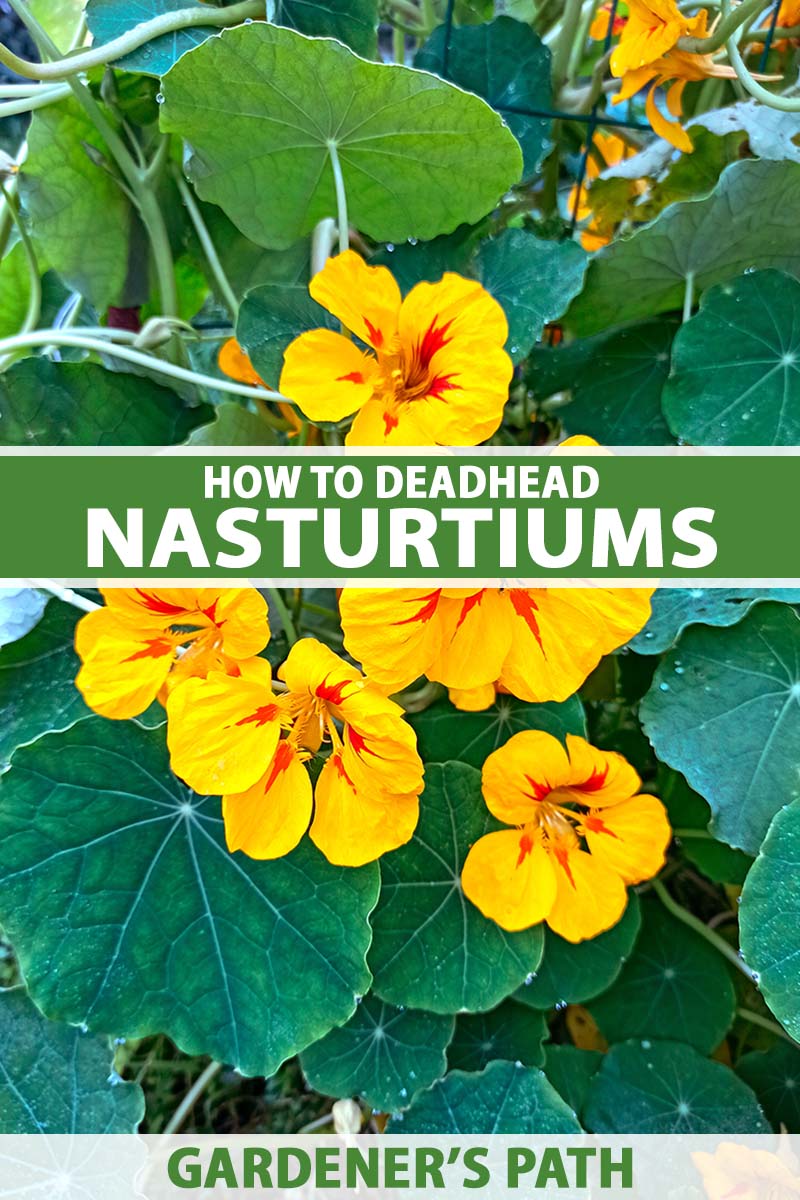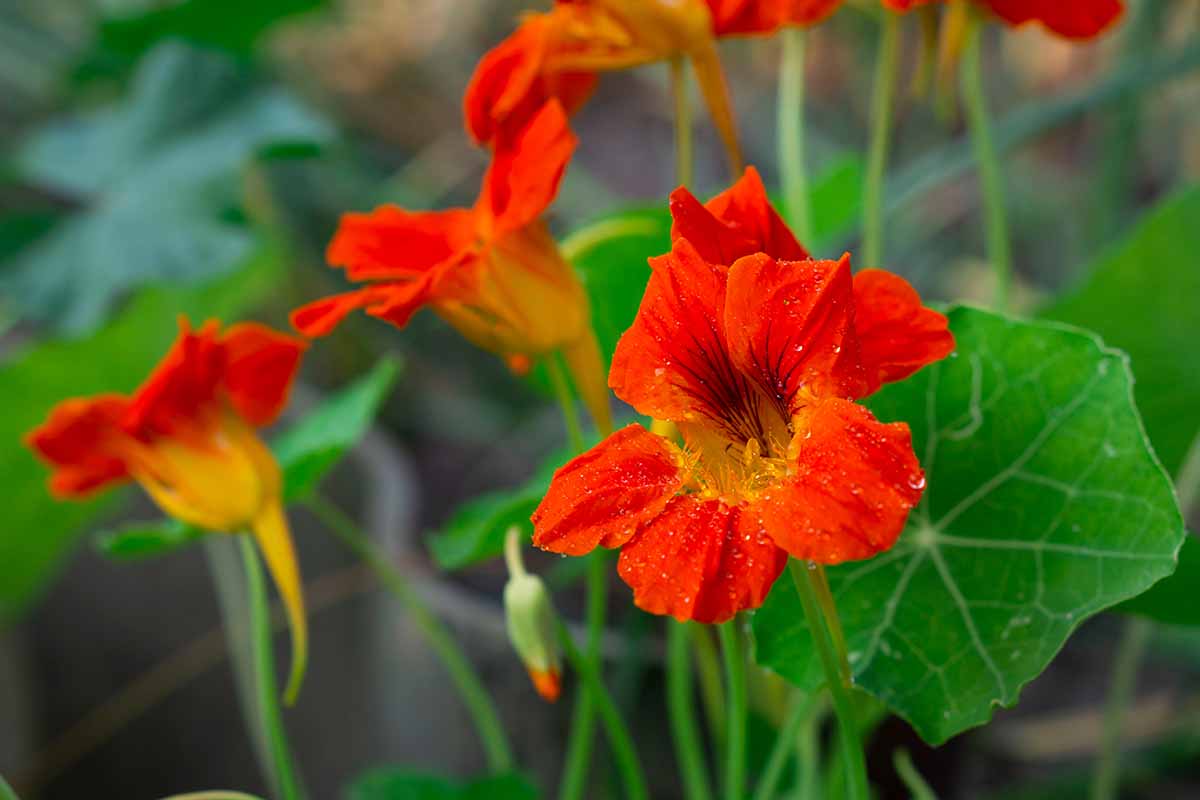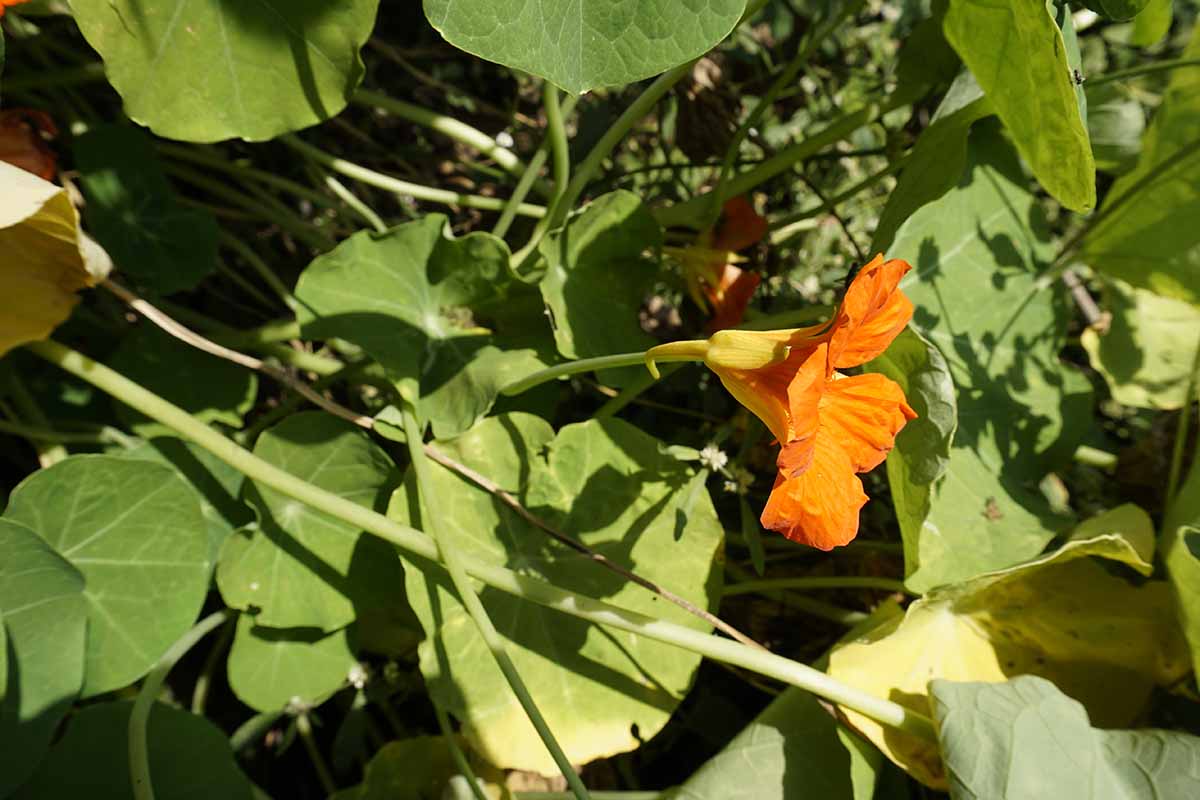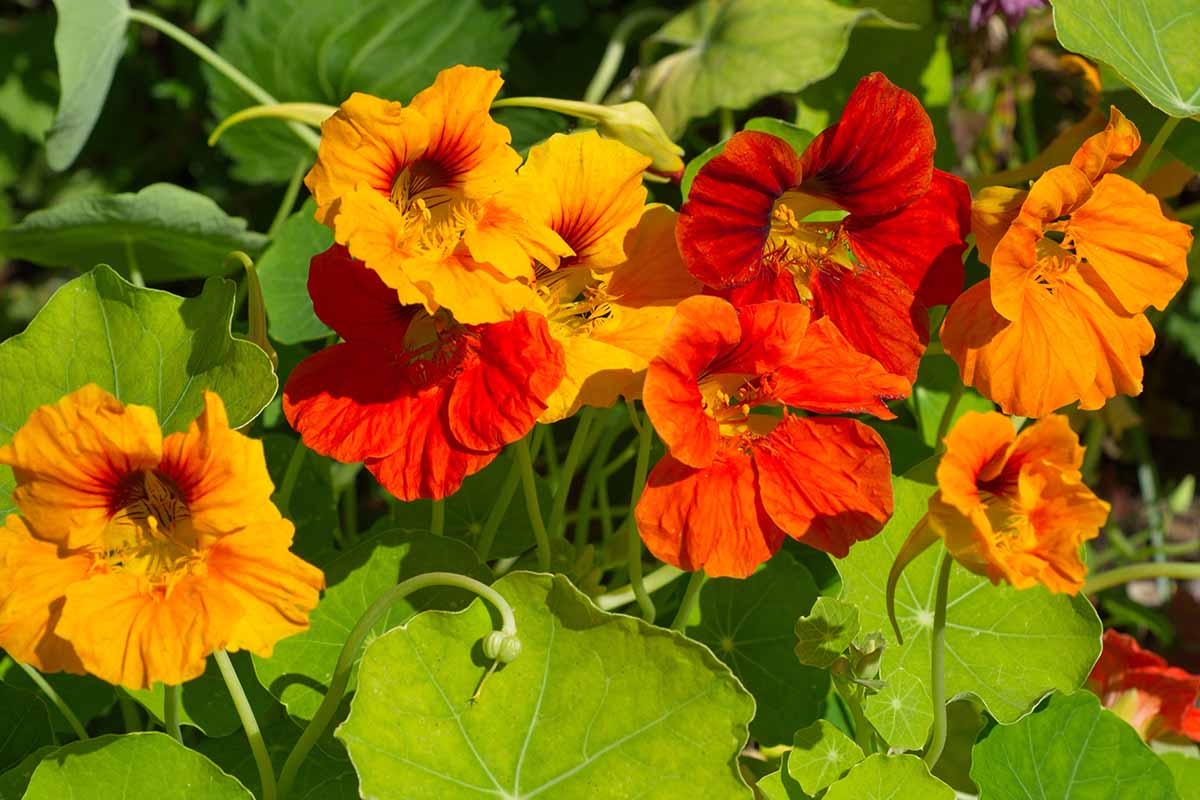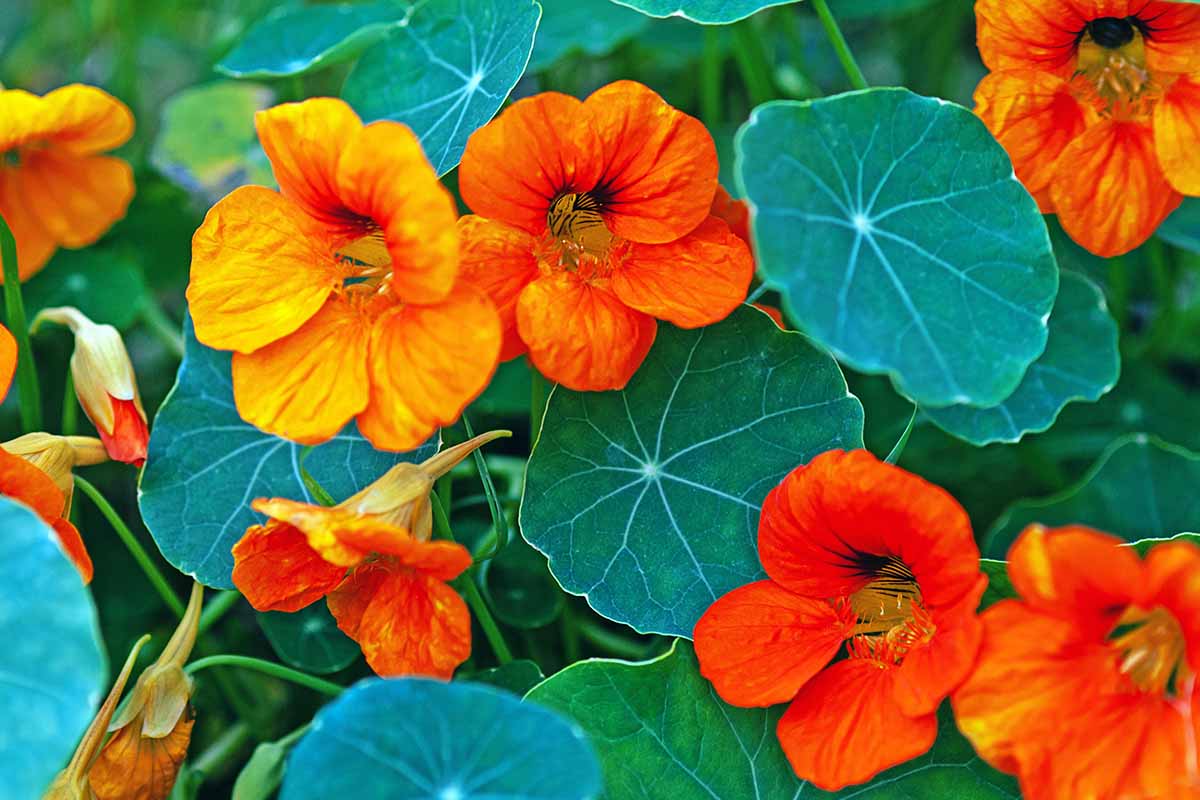With little input from me, they’ll bloom and bloom all season long. I know I’m not the only one with a passion for these low-maintenance beauties! We link to vendors to help you find relevant products. If you buy from one of our links, we may earn a commission. But just because they don’t need extra care to survive, can a little extra attention encourage them to put on a better show? That’s what we’re going to address in this guide. Here’s what to expect: Nasturtiums aren’t demanding when it comes to water, soil quality, and sunlight. If you give them at least partial shade and a moderate amount of water, and protect them from frost, you can basically sit back and enjoy the display. But deadheading has a time and place in the lives of these plants. Let’s discuss!
Is Deadheading Necessary?
So, is deadheading necessary when raising nasturtiums? In a word: No. But also, yes. Let me explain. You don’t need to deadhead for them to continue to blossom throughout its regular flowering season. It will keep blooming whether you remove the spent flowers or not. Some plants, such as roses and geraniums, stop producing new blooms once a flower fades because they think the job of reproduction is done. Others, such as peonies, look unsightly or attract disease with their brown, spent flowers. And still others, such as tree peonies, put energy into producing seeds once the flowers fade. We deadhead these to encourage them to redirect that energy into new flowers, leaves, and roots. But some plants can actually be harmed by deadheading. If you remove the flowers of a foxglove or a hollyhock, the plant can’t send out seeds to produce next year’s display. Where do nasturtiums fall? Somewhere in the middle. Deadheading can extend the flowering season for these plants. It also makes them look a bit tidier. But you don’t need to do so for the plant to continue to produce flowers, and it doesn’t need to be allowed to go to seed. So, while deadheading isn’t necessary, it’s still a good idea. No pressure, but consider doing it for the longest, showiest display possible. The exception is if your plants are extremely leggy. When this happens, it usually means your plant isn’t receiving enough light. If you can, move it and deadhead it completely. You might even want to pinch back all of the leggy stems to encourage bushier growth. One that is located in too much shade might give you one anemic initial display and then fade. Moving it and removing spent blooms is the best way to encourage new flowers.
How to Deadhead
To deadhead, use your fingernails or a pair of scissors to clip each spent blossom right in front of the nearest leaf. If you like to eat the flowers, pinch or cut the flower after it has been open for a few days but before it starts to wilt. Do this in the morning when the flowers are still full of moisture but after the dew has dried. Don’t stress if you miss a few days – or weeks. Just do your best to keep up.
Saving Seeds
Theoretically, if you want to save the seeds from your nasturtium plants, you don’t want to go all out with the deadheading. Allow at least a few of the flowers to fully mature and form seeds. Alternatively, you can stop deadheading towards the end of the growing season and allow the seeds to mature. You can tell that the seeds are ready when they fall off the plant. You really want nasturtium seeds to grow big and mature before you harvest them. Letting them fall off is the easiest way to know that they’re ready. But if you’re eager or if you have a frost on the horizon, you can harvest them. Gently brush a seed with your finger – it should fall away easily when it’s ready. Pick the seeds up off the ground or brush them off the plant, and allow them to dry on a paper towel for a few weeks. Place them in an envelope and store them in a cool, dark place. Nasturtiums are pretty independent and they’ll keep blooming for a long time whether you help them out or not, as long as they’re given the conditions they prefer. But feel free to deadhead if you like to tidy up your plants or you want to extend the flowering season. When you do remove the older blossoms, reserve the flowers to use in the kitchen. They’re delicious! Are you planning to pinch your plants or just leave them be? Do you notice a difference in the length of the blooming season? Let us know in the comments. Looking for even more information to help you grow beautiful nasturtiums? Read these guides next:
How to Plant and Grow Nasturtiums15 of the Best Nasturtium VarietiesHow to Identify and Manage 9 Common Nasturtium PestsHow to Identify and Treat Common Nasturtium Diseases
